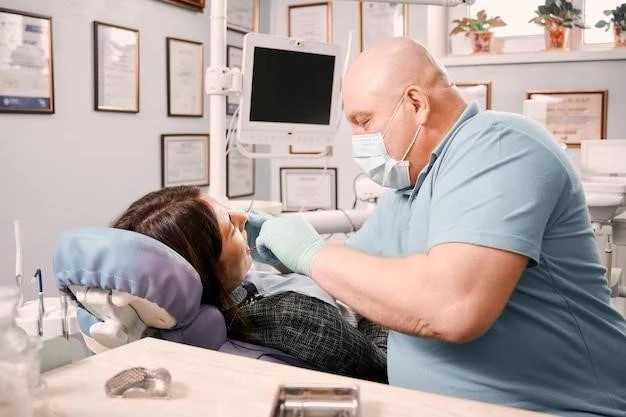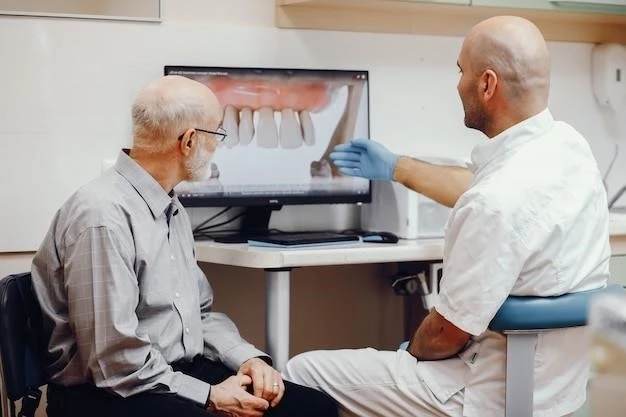Dentatorubral-pallidoluysian Atrophy
Introduction
Dentatorubral-pallidoluysian atrophy (DRPLA) is a rare neurodegenerative disease characterized by DNA repeat expansions․ This progressive condition primarily affects the brain, leading to a range of neurological symptoms․ DRPLA is classified under the umbrella of genetic movement disorders, presenting with symptoms such as muscle rigidity, impaired coordination, cognitive impairment, and involuntary movements․
The genetic mutation responsible for DRPLA involves abnormal DNA repeat expansion within the ATN1 gene․ As the repeats surpass a certain threshold٫ they trigger the onset of the disease․ The expanded repeats result in brain damage٫ particularly in the cerebellum٫ leading to the manifestation of symptoms associated with this disorder․
Understanding the underlying mechanisms and symptoms of DRPLA is crucial for accurate diagnosis and timely intervention․ While there is currently no cure for DRPLA, various treatment options focus on managing symptoms and improving the overall quality of life for affected individuals․ Early detection and proper management can help alleviate the impact of the disease on patients and their families․
Understanding Neurological Disorders
Neurological disorders encompass a broad spectrum of conditions that affect the brain, spinal cord, and nerves․ These disorders can result from various causes, including genetic mutations, environmental factors, infections, or autoimmune responses․ Neurological disorders can present with diverse symptoms, ranging from movement disorders to cognitive impairments․
One significant category of neurological disorders is neurodegenerative diseases, such as Dentatorubral-pallidoluysian atrophy (DRPLA)․ These conditions involve the progressive degeneration of neurons in the nervous system, leading to a decline in neurological function․ Neurodegenerative diseases often result in irreversible damage and can significantly impact a person’s quality of life․
Understanding the mechanisms underlying neurological disorders is vital for developing effective treatments and interventions․ Research into the genetic, molecular, and cellular basis of these conditions plays a crucial role in uncovering potential therapeutic targets․ By elucidating the complex interplay of factors contributing to neurological disorders, scientists and healthcare professionals can work towards improving patient outcomes and enhancing our overall understanding of the human brain․
Neurodegenerative Disease⁚ DRPLA

Dentatorubral-pallidoluysian atrophy (DRPLA) is classified as a neurodegenerative disease that belongs to the family of genetic movement disorders․ This rare condition is characterized by a progressive degeneration of brain cells, particularly in the cerebellum, leading to a range of neurological symptoms․ DRPLA is caused by a genetic mutation that involves abnormal DNA repeat expansion within the ATN1 gene․
Individuals with DRPLA may experience symptoms such as muscle rigidity, impaired coordination, cognitive impairment, and involuntary movements․ These symptoms can manifest at different stages of life, with the severity of the condition varying among affected individuals․ The neurodegenerative nature of DRPLA results in a gradual decline in neurological function over time, impacting both motor skills and cognitive abilities․
Effective management of DRPLA involves a multidisciplinary approach that focuses on symptom relief, supportive care, and enhancing quality of life for patients․ While there is currently no cure for DRPLA, ongoing research aims to better understand the underlying mechanisms of the disease and develop novel treatment strategies to alleviate symptoms and slow disease progression․
DNA Repeat Expansion in DRPLA
Dentatorubral-pallidoluysian atrophy (DRPLA) is associated with a genetic mutation involving abnormal DNA repeat expansion within the ATN1 gene․ Specifically, DRPLA is characterized by the presence of CAG trinucleotide repeat expansions in the gene․ These repeated sequences of DNA disrupt normal gene function and lead to the development of the disease․
The expanded CAG repeats in the ATN1 gene result in the production of abnormal atrophin-1 protein, which contributes to the neurodegenerative process observed in DRPLA․ As the number of CAG repeats increases beyond a certain threshold, the severity of the disease and the age of onset are typically affected․ This phenomenon, known as genetic anticipation, leads to earlier and more severe symptoms in subsequent generations․
The DNA repeat expansion in DRPLA interferes with critical cellular processes, resulting in the degeneration of neurons in the brain, particularly in the cerebellum․ This disruption ultimately leads to the characteristic symptoms of the disease, including movement disorders, cognitive impairment, and muscle rigidity․ Understanding the role of DNA repeat expansions in DRPLA is essential for advancing research efforts aimed at developing targeted therapies and potential interventions for this debilitating condition․
Symptoms of DRPLA
Dentatorubral-pallidoluysian atrophy (DRPLA) presents a spectrum of symptoms that affect both motor and cognitive functions․ Individuals with DRPLA may experience muscle rigidity, impaired coordination, and involuntary movements, such as tremors or jerky motions․ These movement disorders can progressively worsen over time, leading to significant challenges in daily activities․
Cognitive impairment is another hallmark of DRPLA, with affected individuals exhibiting difficulties in memory, decision-making, and overall cognitive processing․ As the disease advances, cognitive decline can become more pronounced, impacting various aspects of intellectual functioning․
>In addition to motor and cognitive symptoms, individuals with DRPLA may also experience ataxia, a condition characterized by impaired coordination and balance․ Ataxia can contribute to problems with gait, speech, and fine motor skills, further complicating the management of the disease․
Recognizing the diverse array of symptoms associated with DRPLA is crucial for early diagnosis and intervention․ By addressing each symptom individually and collectively, healthcare providers can work towards improving the quality of life and functional outcomes for individuals living with this challenging neurodegenerative disease․
Diagnosis of DRPLA
Diagnosing Dentatorubral-pallidoluysian atrophy (DRPLA) can be challenging due to its rare nature and overlapping symptoms with other neurological conditions․ The diagnostic process often involves a comprehensive evaluation of the patient’s medical history, family history, and a thorough neurological examination․
Genetic testing plays a crucial role in confirming a diagnosis of DRPLA․ A blood sample is typically collected to analyze the ATN1 gene for abnormal DNA repeat expansions, particularly CAG trinucleotide repeats․ The presence of an expanded repeat sequence in the gene can provide definitive evidence of DRPLA․
Neuroimaging studies, such as MRI scans, may also be used to assess brain structure and detect any atrophy or abnormalities associated with DRPLA․ These imaging tests can help support the clinical diagnosis and provide additional insights into the progression of the disease․
Consultation with neurologists and genetic counselors is essential in the diagnostic process, as they can interpret test results, establish a treatment plan, and provide support for patients and their families․ Early and accurate diagnosis of DRPLA is crucial for initiating appropriate management strategies and optimizing patient care throughout the progression of the disease․
Treatment Options for DRPLA
Currently, there is no cure for Dentatorubral-pallidoluysian atrophy (DRPLA) due to its progressive and neurodegenerative nature․ However, treatment strategies focus on managing symptoms, improving quality of life, and providing supportive care for affected individuals․
Medications may be prescribed to alleviate specific symptoms associated with DRPLA․ For example, muscle relaxants can help reduce muscle rigidity and tremors, while medications targeting cognitive symptoms may aid in addressing memory and decision-making difficulties․ The goal of pharmacological management is to enhance symptom control and functional abilities․
Physical and occupational therapy are essential components of the treatment plan for DRPLA․ These therapies focus on improving mobility, balance, and coordination, as well as enhancing activities of daily living․ Rehabilitation programs tailored to the individual’s needs can help maintain muscle strength and independence in daily tasks․
Palliative care plays a vital role in managing the complex symptoms of DRPLA and providing holistic support for patients and their families․ Palliative care teams collaborate with healthcare providers to address physical, emotional, and psychosocial needs, ensuring comfort and dignity throughout the course of the disease․
Research into potential disease-modifying therapies and targeted interventions for DRPLA is ongoing, with the ultimate goal of developing treatments that can slow disease progression and improve outcomes for individuals affected by this challenging neurodegenerative disorder․
Prognosis and Management of DRPLA
The prognosis for individuals with Dentatorubral-pallidoluysian atrophy (DRPLA) varies depending on the age of onset, severity of symptoms, and overall disease progression․ As a progressive neurodegenerative disorder, DRPLA typically leads to a decline in neurological function over time, impacting both motor and cognitive abilities․
Management of DRPLA focuses on symptom relief, supportive care, and improving quality of life for affected individuals․ Multidisciplinary teams comprising neurologists, genetic counselors, therapists, and palliative care specialists work together to address the diverse needs of patients and provide comprehensive care throughout the course of the disease․
Regular monitoring and adjustments to the treatment plan are essential in managing DRPLA effectively․ Close collaboration between healthcare providers, patients, and caregivers facilitates proactive symptom management and ensures that the individual’s evolving needs are met as the disease progresses․
While DRPLA presents significant challenges, ongoing research holds promise for advancing our understanding of the disease and identifying novel therapeutic approaches․ By enhancing early detection, improving symptom management, and supporting patients and families with comprehensive care, healthcare professionals strive to optimize outcomes and enhance the overall quality of life for individuals living with DRPLA․
Inherited Nature of DRPLA
Dentatorubral-pallidoluysian atrophy (DRPLA) is classified as an inherited disorder, meaning that the genetic mutation responsible for the condition is passed down from parents to their children․ DRPLA follows an autosomal dominant pattern of inheritance, which means that individuals who inherit a single copy of the mutated gene are at risk of developing the disorder․
The genetic mutation in DRPLA involves abnormal DNA repeat expansions within the ATN1 gene, specifically CAG trinucleotide repeats․ As these repeat sequences expand beyond a certain threshold, they trigger the onset of the disease․ Genetic testing can confirm the presence of these expanded repeats and aid in diagnosing individuals who may be at risk of developing DRPLA․
Individuals with a family history of DRPLA have a higher likelihood of inheriting the mutated gene and experiencing the associated symptoms․ Genetic counseling plays a crucial role in providing information about the inheritance pattern of DRPLA, assessing risk factors for family members, and offering guidance on family planning and reproductive options․
Understanding the inherited nature of DRPLA is essential for identifying at-risk individuals, implementing preventive measures where possible, and supporting families affected by this genetic movement disorder․ By raising awareness about the genetic basis of DRPLA, healthcare providers can empower families to make informed decisions regarding genetic testing and family planning․
Conclusion
In conclusion, Dentatorubral-pallidoluysian atrophy (DRPLA) represents a complex neurodegenerative disease characterized by genetic mutations and DNA repeat expansions within the ATN1 gene․ This inherited disorder manifests in a variety of neurological symptoms, including movement disorders, cognitive impairment, and ataxia, leading to progressive neurological decline․
While there is currently no cure for DRPLA, advancements in research and healthcare management have led to improved diagnostic strategies, supportive care options, and therapeutic interventions aimed at enhancing the quality of life for individuals with this challenging condition․ Early diagnosis, comprehensive care, and ongoing research efforts are fundamental in addressing the complexities associated with DRPLA․
Understanding the inherited nature of DRPLA and its implications for at-risk individuals and families is crucial for promoting awareness, facilitating genetic counseling, and offering support throughout the disease journey․ By fostering collaboration among healthcare professionals, researchers, and families affected by DRPLA, we can work towards better outcomes, improved symptom management, and a deeper understanding of this rare neurodegenerative disorder․
As we continue to expand our knowledge of DRPLA and strive for innovative treatment approaches, the ultimate goal remains centered on providing personalized, compassionate care that addresses the multidimensional needs of individuals affected by this complex neurological condition․ Through ongoing research, education, and advocacy, we can make significant strides in improving the lives of those living with DRPLA and their families․
